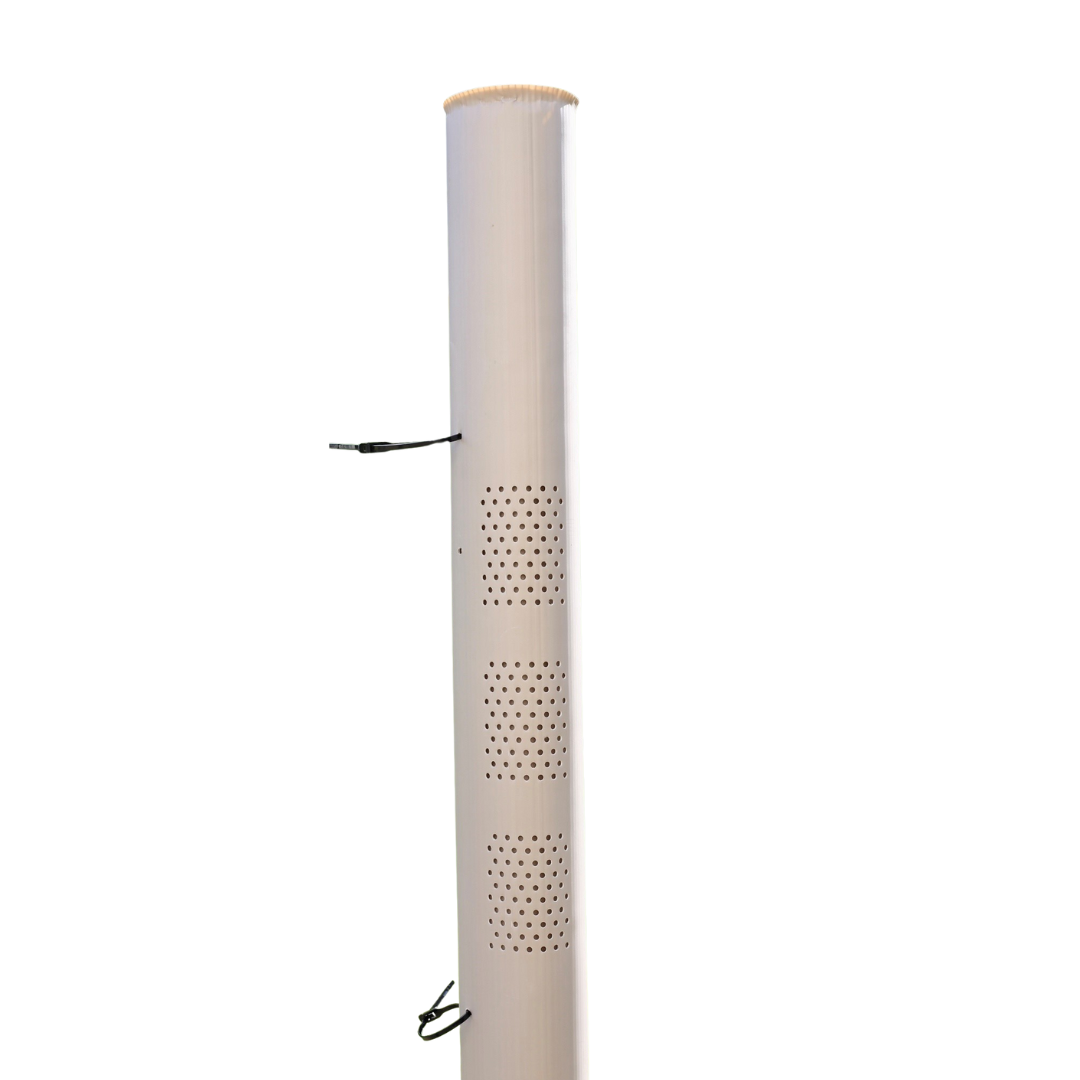Hot Weather Incoming – Are You Ready? Stock up now on essentials to beat the heat.

Vigilis-Bio VentAir Tree Shelters
Completely soil-biodegradable, designed for enhanced airflow.
About Vigilis-Bio VentAir Tree Shelters
The Vigilis-Bio VentAir Tree Shelters offer a sustainable, plastic-free alternative for protecting young trees. Featuring perforated holes, their vented design enhances airflow, ventilation, and light transmission, making them particularly well-suited for warmer or more exposed planting locations.
These shelters provide the same benefits and features as standard tree shelters but are entirely plastic-free and 100% soil-biodegradable (tested to ISO 17556). They require no collection after use and are non-toxic to soil (tested to EN 13432).
A practical and eco-friendly solution for sustainable tree planting.
Vigilis-Bio VentAir Tree Shelters are crafted from derivatives of bio-based materials such as potatoes, wood, and corn. The cellulose structure from these plant-based resources is transformed into a bio-polymer, forming the foundation of these innovative shelters.
Designed with a vented structure, they promote airflow and light transmission, making them suitable for a variety of planting environments. These tree shelters are built to deliver a functional lifespan of 6 years, providing reliable protection while maintaining their eco-friendly credentials.
How are VentAir Tree Shelters packaged?
Vigilis-Bio VentAir Tree Shelters are available in 5 different diameters (73mm, 84mm, 92mm, 102mm, and 110mm). This design allows the shelters to be nested inside each other in groups of five, optimizing space for storage and transportation.
The shelters are conveniently bundled in packs of 30 and securely strapped together, making them easy to carry to site.
With minimal packaging, waste on planting sites is kept to a minimum, supporting both efficiency and sustainability.
Features of the Product
Twin-wall tube construction - The twin-walled construction provides strength to the tree shelter while keeping it lightweight.
Flared Rim - The flared rim minimizes stem abrasion
Venting - Perforated Holes - Facilitates acclimatisation to external conditions through enhanced airflow, ventilation, and light transmission.
Biodegradable or Relesable Cable Tie - Comes pre-fitted with releasable and reusable cable ties.
Light Transmission - Transparent design facilitates light transmission, promoting optimal tree growth.
Break Line - Designed to allow the tree to break through the shelter if necessary. This feature prevents strangulation, ensuring healthy growth, even if the tree grows faster than expected, while the shelter biodegrades naturally.
Heights to be considered
Determine the specific animal you want to protect your plants from, as this will guide the required height and support stake for effective protection. Based on the chosen height, tree shelters can provide defense against voles, rabbits, hares, and deer.
Rabbits - 0.6m
Hares - 0.75m
Muntjac deer - 1.2m
Fallow deer - 1.5m
Frequently Asked Questions
Why use tree shelters?
Tree shelters promote healthy growth and improve young trees' survival by offering:
- Protection from browsing animals
- Increased tree survival rates
- Defense against harsh weather and environmental conditions
- A supportive microclimate with ideal temperature, carbon dioxide levels, moisture, light spectrum, and intensity for optimal growth
Are there any downsides to using tree shelters?
Tree shelters play a crucial role in promoting optimal tree growth. However, conventional shelters made from polypropylene contribute to plastic waste in forests and require retrieval at the end of their use. Soil-biodegradable tree shelters represent the future of sustainable forestry, decomposing naturally onsite and leaving only water, minerals, and biomass behind.
What is the difference between using standard and vented tree shelters?
Both types are made from UV-stabilized, photodegradable polypropylene with a durable twin-wall construction, featuring flared rims, laser lines, and pre-fitted, releasable cable ties. Vented tree shelters include perforated holes in the upper two-thirds, allowing air circulation that acclimates trees to harsh winds and environmental conditions. This ventilation supports strong trunk and root development, making vented shelters especially suitable for windy and exposed areas.
What are biodegradable tree shelters?
Vigilis-Bio biodegradable tree shelters are a cutting-edge, plastic-free solution made from a unique blend of bio-based derivatives—potatoes, wood, and corn—combined with a custom biodegradable polymer. These shelters perform comparably to traditional options, offering 5 years of growth protection, then disintegrating within 6–12 months. They fully biodegrade in the soil over the following 2 years, leaving only water, minerals, and biomass, which nourish soil microbes.
Recommended Products
Vigilis-Bio VentAir Tree Shelters
- SKU: 216400-216912
- Weight: 0.17kg-0.5kg
- Height: 0.6m, 0.75m, 1.2m, 1.5m, 1.8m





